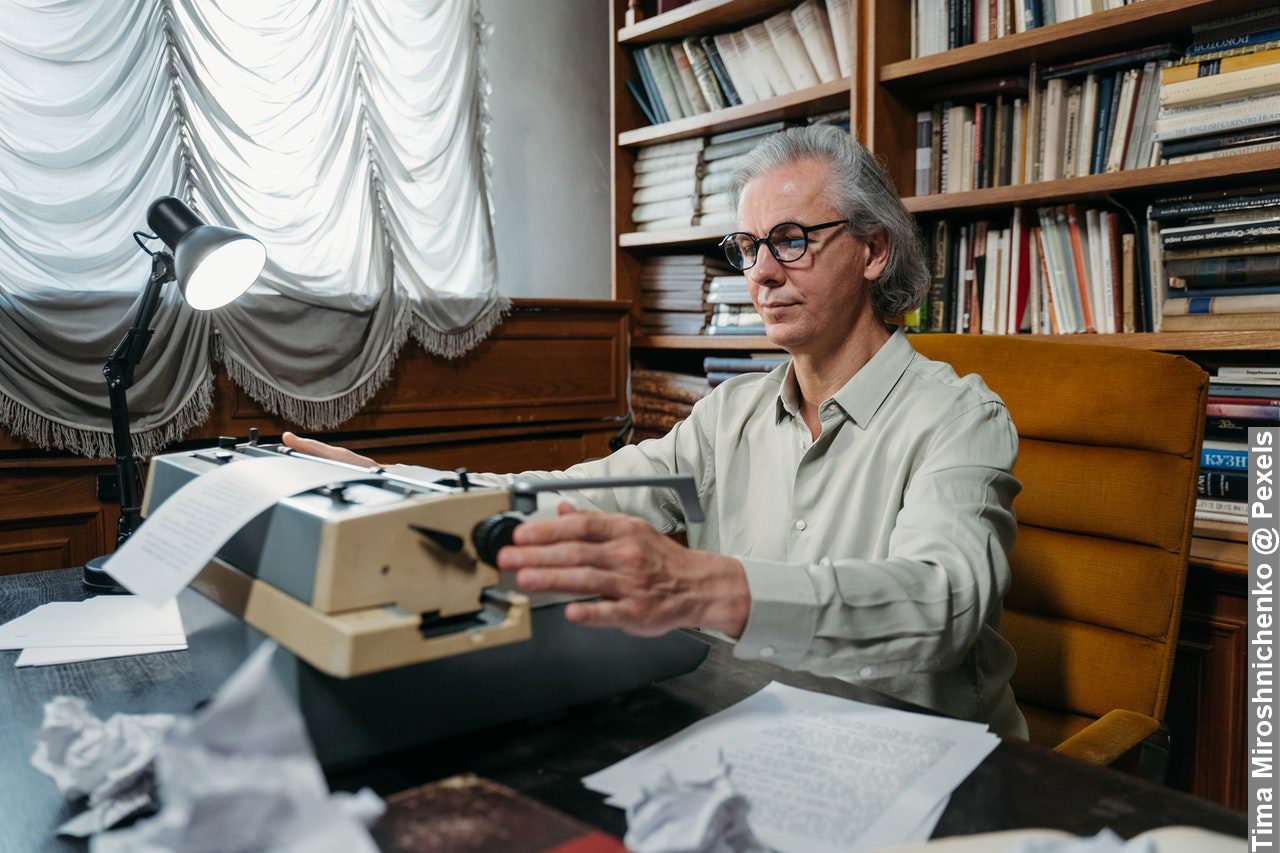If you are anything like me, not having a great working pattern or unique working routines makes it hard to complete any given task. As a result, whenever I am called to meet deadlines, be creative, initiate my innovative juices or mind, and solve problems, I procrastinate so much that the morning light fades away into the sunset.
I wish I could say this is a recent phenomenon; however, thoughtful engagement with my conscious mind tells me that my procrastination goes back to the date just before I started revision my GCSEs. I vividly remember trying to ascertain which revision approach would lead me to future success.
The iteration process did not work, and I am still waiting for these accomplishments. I can honestly say that from those teenage years, into early adulthood, into middle age, those conversations have persisted in my mind. Gallingly trying to find good practices and unique working routines which can focus my mind.

In recent years I have been playing my hand at producing creative works in literature form and the creative space; procrastination will not let me be and is still my nearest companion. During a coffee lunch with my best pal Maria, she suggested that I read the Daily Rituals by Mason Currey. This book was introduced to her when she was having her brawls with procrastination.
What are unique working routines all about?
Daily Rituals scrutinises the working routines of many great philosophers, writers, composers, and artists ever to have lived. Packed with fascinating insights into the procedure of genius and entertaining stories of the personalities behind it.
Daily Rituals is overwhelmingly addictive and completely inspiring if you have ever wondered how individuals produce outstanding works. So buckle up and enjoy the discoveries. Even the greats have procrastinated scruffles, and all had to work to find ways to produce quality!

Who is behind Daily Rituals and responsible for exposing the unique working routines?
Daily Rituals is the brainchild of Mason Currey. He set out to address his personal struggles of ‘how you can do meaningful creative work while also earning a living. He wanted to know if you should devote yourself entirely to the project, set aside some time each day, give things up (sleep, income, clean house, etc.), learn to condense activities or do more in less time?
Mason Currey wanted to discover if uncovering the basic level of daily routine was a prerequisite for sustained creative work? So he collected anecdotes of people’s routines when he ran across them in biographies, magazine profiles, newspaper orbits, and others.
He collected all his findings and created the Daily Routines Blog to house them. His blog is his warehouse filled with examples of how various brilliant and successful people have confronted many of the same challenges.
He wanted to show how establishing unique working routines or growing creative visions translate to small daily increments; and how one’s working habits influenced the work itself and vice versa. The power of incremental gains or marginal gains.

What are some examples of unique working routines by creators?
Mason Currey’s book shows how some of the greatest minds of the past four hundred years approached their craft. They made time each day to do their best work, and they organised their schedules to be creative and productive.
The book is not only fascinating about the individualistic nature of their routine but also about what they consume. They all instilled daily rituals to get done the work they love to do, whether by waking early, staying up late or taking long daily walks.
But many self-medicated with doughnuts, bathing, drinking vast quantities of coffee, amphetamine, aspirin, smoking, opiates and drugs to keep them in their creative worlds. Below are a few examples of some of the greats taken from the book;
Thomas Wolfe
Wrote, standing up in the kitchen, using the top of the refrigerator as his desk, dreamily fondling his testicles.
Jean-Paul Sartre
Chewed on Corydrane tablets (a mix of amphetamine and aspirin), ingesting ten times the recommended daily dose.
René Descartes
Liked to linger in bed, his mind wandering in sleep through woods, gardens, and enchanted palaces where he experienced “every pleasure imaginable.”
Anthony Trollope
Demanded himself that each morning he write three thousand words (250 words every fifteen minutes for three hours) before going off to his job at the postal service, which he kept for thirty-three years during the writing of more than two dozen books.
Karl Marx
Mode of living consisted of daily visits to the British Museum reading room. He usually remained from nine in the morning until it closed at seven. This was followed by long hours of work at night, accompanied by ceaseless smoking, which became an indispensable anodyne from a luxury.
Woody Allen
Sums up his routine as “I get up in the morning,” he says, “take the kids to school, then do the treadmill, then get into my room and work, have lunch, go back and work, practice the clarinet, see friends or go to a basketball game. It’s a bourgeois, middle-class worker’s life. But it’s enabled me to be productive over the years.”
Agatha Christie
She enjoyed herself in her ordinary living that writing was a task she performed in spells and bursts. She never had a definite place in her room or where she retired, especially to write. As she puts it, all and needed was a steady table and a typewriter.
However, when she started to write, she would shut the door and prevent people from interrupting. Then she could go full speed ahead, completely lost in what she was doing.

George Balanchine
Did most of his work while ironing.
Leo Tolstoy
He said, “I must write each day without fail, not so much for the success of the work, as in order not to get out of my routine.” He worked in isolation, no one was allowed to enter his study, and the doors to the adjoining rooms were locked to ensure he would not be interrupted.
Charles Dickens
Rose at 7:00 am, had breakfast at 8:00 am and was in his study by 9:00 am. He stayed there until 2:00 pm, taking a brief break for lunch with his family. He often seemed to be in a trance, eating mechanically and barely speaking a word before hurrying back to his desk.
Promptly at 2:00 pm, Dickens left his desk for a vigorous three-hour walk through the countryside or the streets of London, continuing to think of his story and, as he described it, “searching for some pictures I wanted to build upon.”
He could complete about two thousand words this way on an ordinary day. Still, he sometimes managed twice that amount during a flight of imagination. Other days, however, he would hardly write anything; nevertheless, he stuck to his work hours without fail, doodling and staring out the window to pass the time.
Pablo Picasso
Would often go to bed late and wake up late. Picasso would arrive at his studio early afternoon and work until dusk, often standing for several hours in front of his canvas.
Ira Gershwin
Worked for twelve hours a day from late morning to midnight, composing at the piano in pyjamas, bathrobe, and slippers.
Charles Darwin
Was a creature of habit. Darwin did three solid hours of daily work, interspersed with his correspondence, walks, rests, and meals. After dinner, he would retire to the drawing-room with the ladies rather than join the men.
Benjamin Franklin
Was a morning person and loved habits. He got up at the same time every day, worked a set number of hours, and then went to bed simultaneously. His schedule included a prep period in the morning, a two-hour lunch, and a hard stop from work at 5 pm. He worked in two four-hour bursts.
Jane Austen
Rose early, before the other women were up and played the piano. At 9:00 am, she organised the family breakfast, her one major piece of household work. Then she settled down to write in the sitting room, often with her mother and sister sewing quietly nearby. Dinner, the day’s main meal, was served between 3:00 and 4:00. Afterwards, there was conversation, card games, and tea. Finally, the evening was spent reading aloud from novels; during this time, she would read her work-in-progress to her family.
Igor Stravinsky
He could never compose unless he was sure no one could hear him; when feeling blocked in the brain, he stood on his head to clear the brain.

Final note!
Learning how to harness the most precious commodity, ‘time’, along with willpower, self-discipline and optimism, was the biggest takeaway from reading this book.
Unique working routines are very much individualistic; it must be a routine which has been trialled and tested and must satisfy your mental framework to keep boredom at bay. Forming good habits puts your mind on autopilot, which frees up your creative brain.
I now understand that being creative and producing great work takes time. So I am more at peace knowing that I am not totally useless when producing my blog and my side hustles.
I often thought it took far too long to get a post live, but now I understand that doing a few hundred words daily is an outstanding achievement. I am slowly and surely starting to implement routines daily so I can maximise my days!


